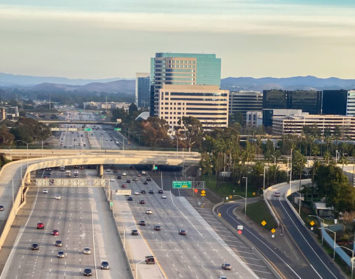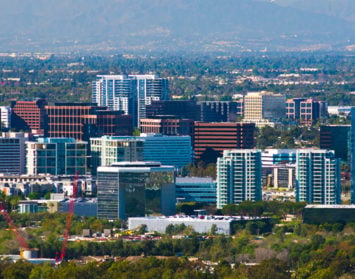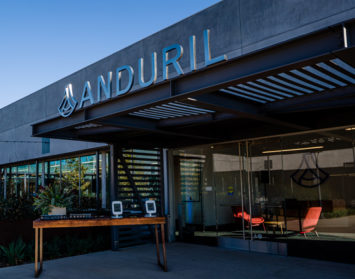By Tucker Hughes
2016 was another strong year for the Orange County commercial real estate market.
The office segment of the market country-wide experienced a total of 1.3 million square feet of positive absorption, which reduced vacancy rates from 9.4% to 8.9% relative to the end of 2015. This dropped the total amount of vacant office space to just 13.7 million square feet in a market that totals just over 150 million square feet of office space. We also saw average rents increase from $2.21 to $2.33 per square foot over the same period, which has been fueled by the shifting supply/demand imbalance in the market and expensive new construction which has pulled the average up due to the high rents being achieved at these properties.
The industrial asset type also faired very well in 2016 with positive absorption totaling just under 1 million square feet for the year, pushing vacancy rates even lower to 2.3% relative to the 2.7% we saw at the end of 2015. The total square footage of vacant industrial space is now at just 6.9 million square feet in a market that is over 300 million square feet in size. It’s likely that we would have seen even larger absorption in the industrial segment if there was any inventory at all in some of the more desirable markets, versus much of the inventory available being in the north part of Orange County. Average rents also increased dramatically over the prior year, jumping from $0.80 per square foot to $0.88 per square foot for a whopping 10% increase.
As 2016 came to close there was a total of 2.4 million square feet of office product under construction relative to just 274,000 square feet of industrial space. It’s interesting to note that the office product type has a significantly higher vacancy rate and a much smaller total market size, yet we still see massive development while very little is being constructed on the industrial side of the market. High land prices are to blame. Given the limited density of industrial real estate, developers would need to be achieving rents similar to that of office space to make it pencil, and even then it would be challenging. Office developers have the obvious advantage of going vertical and being able to charge more per square foot due to the types of companies that need corporate space.
Where is the relief value for industrial tenants? It’s in the Inland Empire. In San Bernardino and Riverside County there is now 15.6 million square feet under development. Unfortunately, this is unlikely to lower rental rates at all locally, however, it will almost certainly create a ceiling to where Orange County rents can rise before companies decide that they have no choice but to move east. Where will that ceiling end up? Time will tell, but one has to begin to wonder how much farther industrial rents can climb given their rapid rise over the past few years.
Of the 2.4 million square feet of office product under development, almost all of it is in South County. The exception to this is the monstrous Boardwalk project in the center of the Irvine market that surrounds John Wayne Airport. The concentration of the new development occurring is interesting and is a clear testament to the popularity of areas like Irvine Spectrum, which for Class A product is more expensive than being by the airport.
What does all of this mean for tenants in 2017? Be prepared for increased rents, especially for industrial space users, as the supply/demand equation further tilts in favor of landlords county-wide.
Tucker Hughes is managing director at Hughes Marino, a global corporate real estate advisory firm that exclusively represents tenants and buyers. As head of Hughes Marino’s Orange County and Los Angeles offices, Tucker specializes in tenant representation and building purchases throughout Southern California. Tucker makes frequent media appearances to speak on the future of commercial real estate, and is also a regular columnist for Entrepreneur.com. Contact Tucker at 1-844-662-6635 or tucker@hughesmarino.com.











